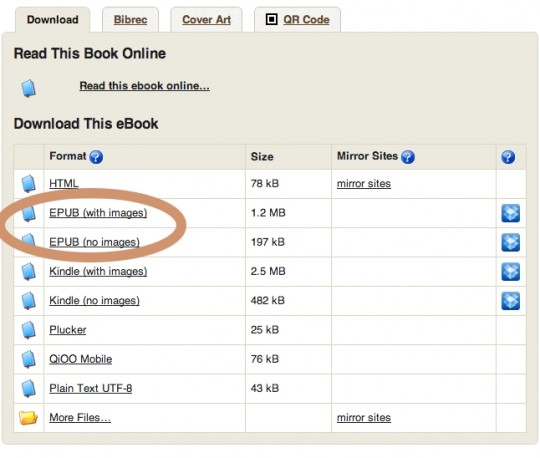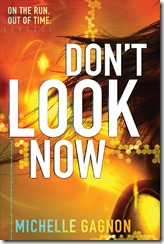
Anyone looking to build and sustain high performance should consider these 5 tips.
1. Routines
The first tip comes from Tony Schwartz author of The Power of Full Engagement and Be Excellent at Anything. In his contribution to Maximize Your Potential, he recommends harnessing the power of a ritual.
A ritual is a highly precise behavior you do at a specific time so that it becomes automatic over time and no longer requires much conscious intention or energy.
Willpower and discipline are over-rated.
In his book, Willpower: Rediscovering the Greatest Human Strength, Roy Baumeister contends that the most successful people don’t make better decisions because of their willpower. Rather, they develop routines.
These routines reduce the number of decisions we need to make (as well as reducing stress). Thus it becomes easier to use your limited resources of self-control to avoid, rather than solve, crises.
Developing these routines are key. In Michael Lewis’ profile of President Obama, he writes:
You also need to remove from your life the day-to-day problems that absorb most people for meaningful parts of their day. “You’ll see I wear only gray or blue suits,” (Obama) said. “I’m trying to pare down decisions. I don’t want to make decisions about what I’m eating or wearing. Because I have too many other decisions to make.” He mentioned research that shows the simple act of making decisions degrades one’s ability to make further decisions. It’s why shopping is so exhausting. “You need to focus your decision-making energy. You need to routinize yourself. You can’t be going through the day distracted by trivia.”
If we spend energy making too many little decisions, we’ll have less to make the more important decisions. Some companies are cluing into this.
“I think that the leadership at Google has an intuitive understanding of human nature and the way attention is a limited resource,” says David Rock author of Your Brain at Work: Strategies for Overcoming Distraction, Regaining Focus, and Working Smarter All Day Long.
Google organizes their environment to make allow their employees to make fewer decisions.
The formula at Club Med is to include pretty much everything in the price, activities, food, even drinks, giving you fewer decisions to make. Now I know the research on decision making, and how making any conscious decision uses a measurable amount of glucose, but I wasn’t prepared for how relaxing it was not having to think anywhere near as much, even about simple things. It turned out to be a remarkably restful holiday.
When you work at google, you get to save your limited mental resources for the most important decisions. As Google’s CEO Eric Schmidt said, “Let’s face it: programmers want to program, they don’t want to do their laundry. So we make it easy for them to do both.”
…Other companies could do well to do the same, noticing what their employees end up wasting their attention on, and doing something about it. It’s sure making me rethink my own company’s benefits policies.
… as well as minimizing distractions and respecting attention, Google does other things to help its people be more productive, in particular being more productive at complex problem solving.
2. Focus
Your routines should be geared towards helping you focus.
In Your Brain at Work, David Rock writes:
One of the most effective distraction-management techniques is simple: switch off all communication devices during any thinking work. Your brain prefers to focus on things right in front of you. It takes less effort. If you are trying to focus on a subtle mental thread, allowing yourself to be distracted is like stopping pain to enjoy a mild pleasure: it’s too hard to resist! Blocking out external distractions altogether, especially if you get a lot of them, seems to be one of the best strategies for improving mental performance
Combining routine and focus is the sweet spot. Here are two examples you can put into practice today.
First, Mark McGuinness argues in Manage Your Day-to-Day that you should put your most important work first. It’s much easier to deal with less taxing things, like email, later.
The single most important change you can make in your working habits is to switch to creative work first, reactive work second. This means blocking off a large chunk of time every day for creative work on your own priorities, with the phone and e-mail off.
Another way to think of this is to pay yourself first: you are your own most valuable client. That’s what Warren Buffett and Charlie Munger do.
Another useful routine is to deal with email in batches, say from 10-11 and 3-4 each day. The rest of the day, turn the email client off so you’re not constantly interrupted with ‘new mail.’ (How to deal with email.)
Consider the wise counsel of Herbert Simon:
What information consumes is rather obvious: it consumes the attention of its recipients. Hence a wealth of information creates a poverty of attention, and a need to allocate that attention efficiently among the overabundance of information sources that might consume it.
3. Practice
Experience doesn’t always make you better.
In Talent Is Overrated, Geoff Colvin writes:
In field after field, when it comes to centrally important skills—stockbrokers recommending stocks, parole officers predicting recidivism, college admissions officials judging applicants—people with lots of experience were no better at their jobs than those with less experience.
Wait. What? That doesn’t make sense.
We typically operate in the OK Plateau.
Bestselling author of Moonwalking with Einstein and USA Memory Champion in 2005, Joshua Foer explains:
In the 1960s, psychologists identified three stages that we pass through in the acquisition of new skills. We start in the “cognitive phase,” during which we’re intellectualizing the task, discovering new strategies to perform better, and making lots of mistakes. We’re consciously focusing on what we’re doing. Then we enter the “associative stage,” when we’re making fewer errors, and gradually getting better. Finally, we arrive at the “autonomous stage,” when we turn on autopilot and move the skill to the back of our proverbial mental filing cabinet and stop paying conscious attention. … The OK Plateau is that point when we reach the autonomous stage and consciously or unconsciously stay to ourselves, “I am OK at how good I have gotten at this task,” and stop paying attention to our improvement. We all reach OK Plateaus in almost everything we do. We learn to drive when we’re teenagers, and at first we improve rapidly, but eventually we are no longer a threat to old ladies crossing the street, and we stop getting appreciably better.
If we want to perform better beyond some basic competence researchers say we must engage in deliberate practice. These are designed, mindful efforts, to master even the smallest detail of success. To get better you have to get out of the autonomous stage.
One way to stay out of the autonomous stage is deliberate practice. Expert musicians, for example, focus on the hardest parts not the easy ones that would allow them to sink into autopilot. The way to get better is to push your limits.
Unfortunately, deliberate practice isn’t something that most of us understand, let alone engage in on a daily basis. This helps explain why we can work at something for decades without really improving our performance.
Colvin continues:
Deliberate practice is characterized by several elements, each worth examining. It is activity designed specifically to improve performance, often with a teacher’s help; it can be repeated a lot; feedback on results is continuously available; it’s highly demanding mentally, whether the activity is purely intellectual, such as chess or business-related activities, or heavily physical, such as sports; and it isn’t much fun.
Consider a coach.
In his fascinating New Yorker article, Doctor Atul Gawande writes “In theory, people can do this themselves.”
But most people do not know where to start or how to proceed. Expertise, as the formula goes, requires going from unconscious incompetence to conscious incompetence to conscious competence and finally to unconscious competence. The coach provides the outside eyes and ears, and makes you aware of where you’re falling short.
In other words, the coach provides objective feedback and structure.
Commenting on what it’s like to have a surgical coach, Gawande offers:
Osteen (Gawande’s coach) watched, silent and blank-faced the entire time, taking notes. My cheeks burned; I was mortified. I wished I’d never asked him along. I tried to be rational about the situation—the patient did fine. But I had let Osteen see my judgment fail; I’d let him see that I may not be who I want to be.
This is why it will never be easy to submit to coaching, especially for those who are well along in their career. I’m ostensibly an expert. I’d finished long ago with the days of being tested and observed. I am supposed to be past needing such things. Why should I expose myself to scrutiny and fault-finding?
It takes a special person to bring in a coach mid-career and subject themselves to “scrutiny and fault-finding.”
Maybe you’re thinking, I don’t need a coach because “I’m my own worst critic.” That may be the case, however it is really hard, but not impossible, to be your own (objective) coach. You need structure and objective feedback.
(I don’t want to get into too much nuance, but you also have to think about feedback systems. Part of deliberate practice is immediate and constant feedback. This enables course correction. The time-to-feedback can derail deliberate practice if it’s too long.)
4. Exercise
In Brain Rules, John Medina explores the relationship between exercise and mental alertness:
Just about every mental test possible was tried. No matter how it was measured, the answer was consistently yes: A lifetime of exercise can result in a sometimes astonishing elevation in cognitive performance, compared with those who are sedentary. Exercisers outperform couch potatoes in tests that measure long-term memory, reasoning, attention, problem-solving, even so-called fluid-intelligence tasks. These tasks test the ability to reason quickly and think abstractly, improvising off previously learned material in order to solve a new problem. Essentially, exercise improves a whole host of abilities prized in the classroom and at work.
5. Rest
Taking time to rest won’t make you a slacker. While the corporate culture of “back-to-back” meetings from 9-5 may seem “cool” it is actually crazy. Rest is a critical component of creating and sustaining excellence.
Sponsored by #ogilvychange — Little ideas from big thinkers



































